Импрессионизм.pptx
- Количество слайдов: 13
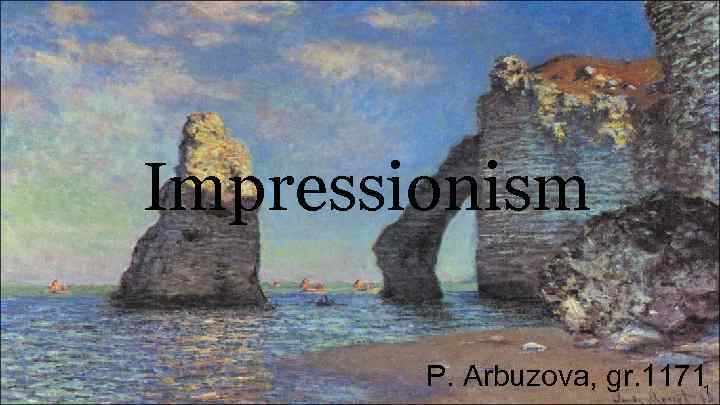
Impressionism P. Arbuzova, gr. 11711
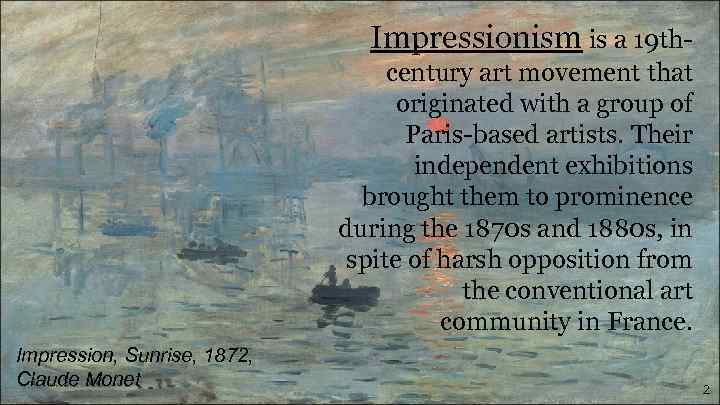
Impressionism is a 19 thcentury art movement that originated with a group of Paris-based artists. Their independent exhibitions brought them to prominence during the 1870 s and 1880 s, in spite of harsh opposition from the conventional art community in France. Impression, Sunrise, 1872, Claude Monet 2
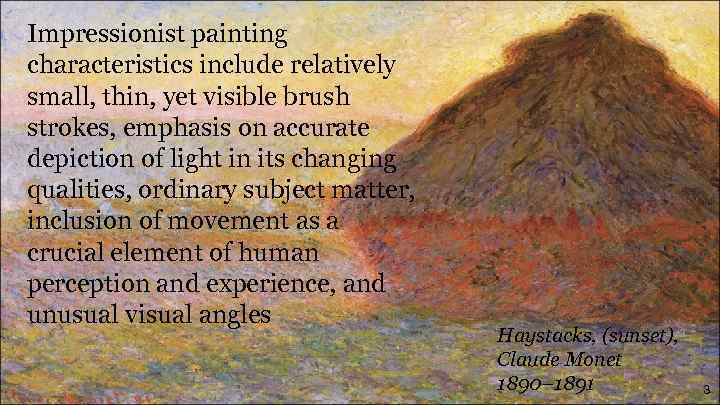
Impressionist painting characteristics include relatively small, thin, yet visible brush strokes, emphasis on accurate depiction of light in its changing qualities, ordinary subject matter, inclusion of movement as a crucial element of human perception and experience, and unusual visual angles Haystacks, (sunset), Claude Monet 1890– 1891 3
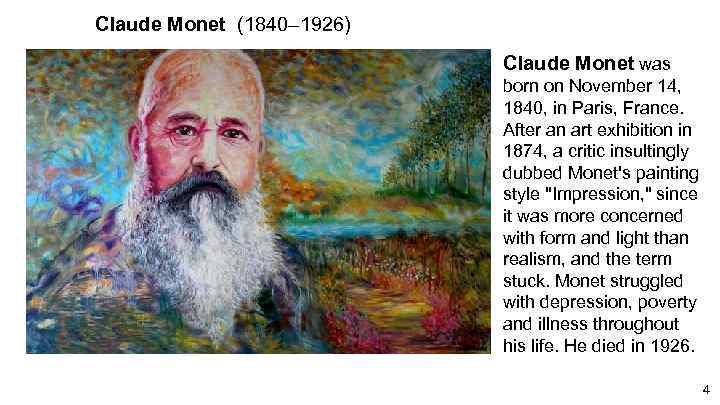
Claude Monet (1840– 1926) The Master of Light and Color Claude Monet was born on November 14, 1840, in Paris, France. After an art exhibition in 1874, a critic insultingly dubbed Monet's painting style "Impression, " since it was more concerned with form and light than realism, and the term stuck. Monet struggled with depression, poverty and illness throughout his life. He died in 1926. 4
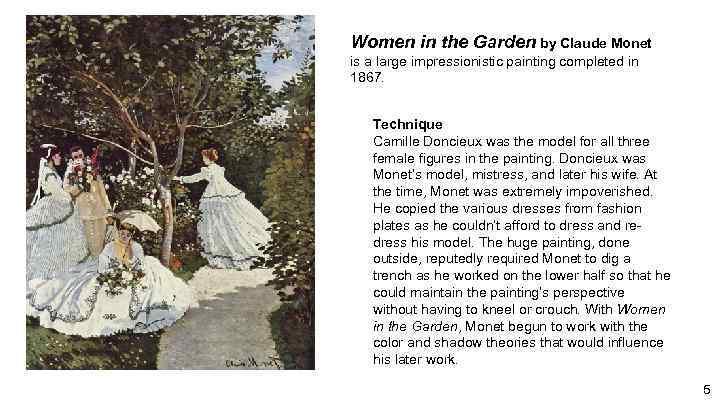
Women in the Garden by Claude Monet is a large impressionistic painting completed in 1867. Technique Camille Doncieux was the model for all three female figures in the painting. Doncieux was Monet’s model, mistress, and later his wife. At the time, Monet was extremely impoverished. He copied the various dresses from fashion plates as he couldn’t afford to dress and redress his model. The huge painting, done outside, reputedly required Monet to dig a trench as he worked on the lower half so that he could maintain the painting’s perspective without having to kneel or crouch. With Women in the Garden, Monet begun to work with the color and shadow theories that would influence his later work. 5
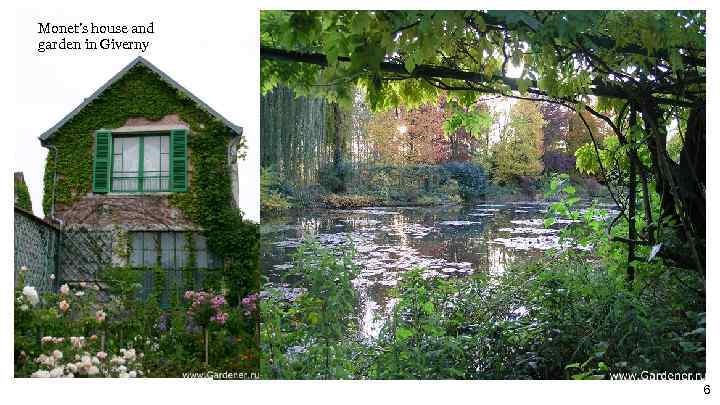
Monet's house and garden in Giverny 6
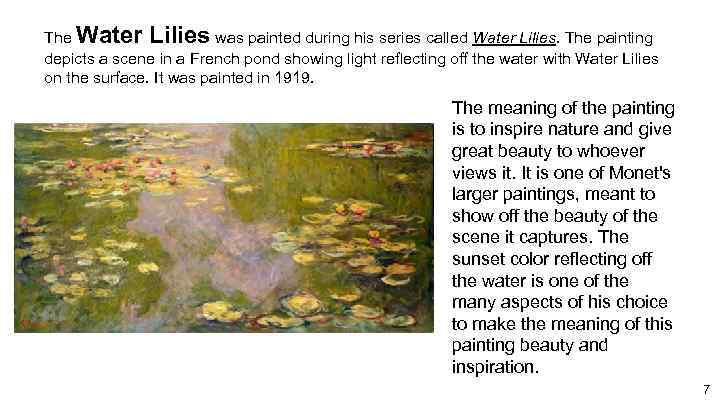
The Water Lilies was painted during his series called Water Lilies. The painting depicts a scene in a French pond showing light reflecting off the water with Water Lilies on the surface. It was painted in 1919. The meaning of the painting is to inspire nature and give great beauty to whoever views it. It is one of Monet's larger paintings, meant to show off the beauty of the scene it captures. The sunset color reflecting off the water is one of the many aspects of his choice to make the meaning of this painting beauty and inspiration. 7
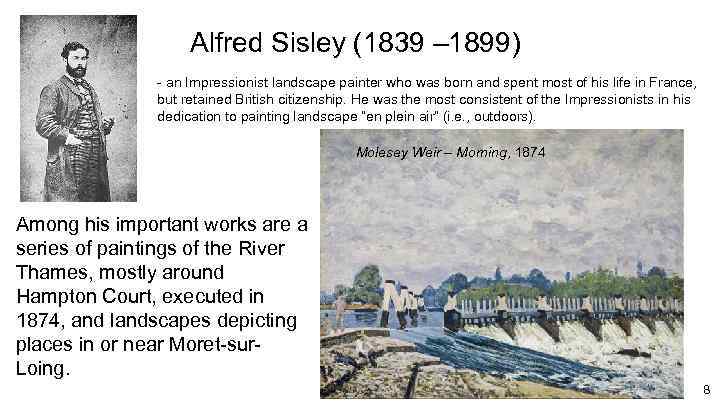
Alfred Sisley (1839 – 1899) - an Impressionist landscape painter who was born and spent most of his life in France, but retained British citizenship. He was the most consistent of the Impressionists in his dedication to painting landscape “en plein air” (i. e. , outdoors). Molesey Weir – Morning, 1874 Among his important works are a series of paintings of the River Thames, mostly around Hampton Court, executed in 1874, and landscapes depicting places in or near Moret-sur. Loing. 8
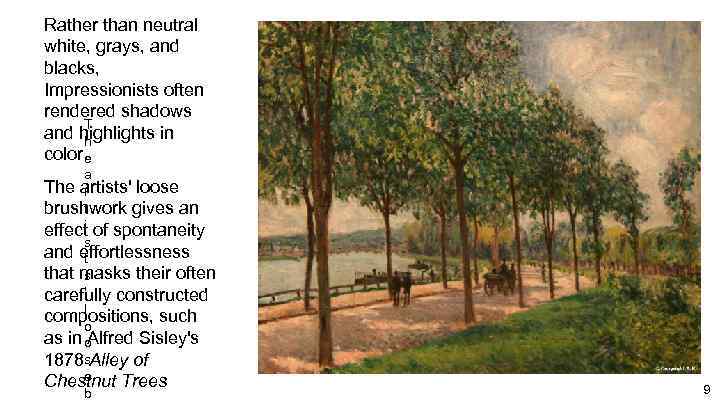
Rather than neutral white, grays, and blacks, Impressionists often rendered shadows T and highlights in h color. e a The artists' loose r t brushwork gives an i effect of spontaneity s and effortlessness t that masks their often s ' carefully constructed l compositions, such o as in Alfred Sisley's o s 1878 Alley of e Chestnut Trees b 9
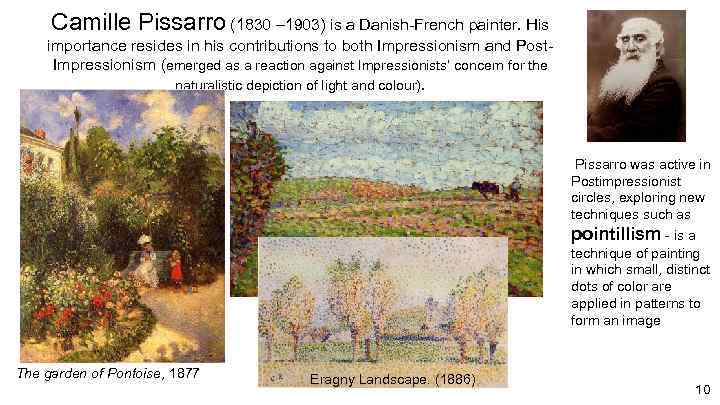
Camille Pissarro (1830 – 1903) is a Danish-French painter. His importance resides in his contributions to both Impressionism and Post. Impressionism (emerged as a reaction against Impressionists’ concern for the naturalistic depiction of light and colour). Pissarro was active in Postimpressionist circles, exploring new techniques such as pointillism - is a technique of painting in which small, distinct dots of color are applied in patterns to form an image The garden of Pontoise, 1877 Eragny Landscape. (1886) 10
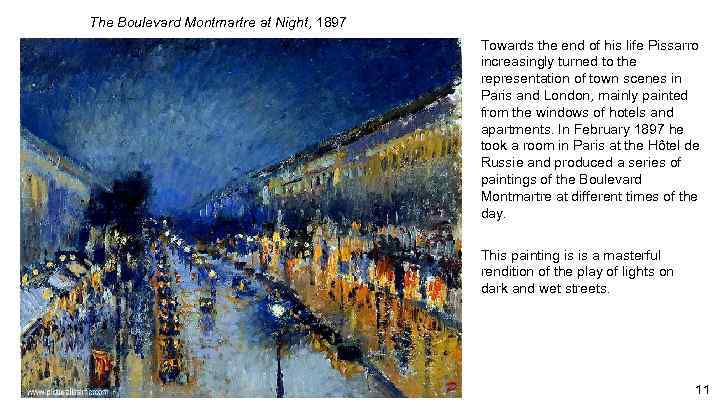
The Boulevard Montmartre at Night, 1897 Towards the end of his life Pissarro increasingly turned to the representation of town scenes in Paris and London, mainly painted from the windows of hotels and apartments. In February 1897 he took a room in Paris at the Hôtel de Russie and produced a series of paintings of the Boulevard Montmartre at different times of the day. This painting is is a masterful rendition of the play of lights on dark and wet streets. 11
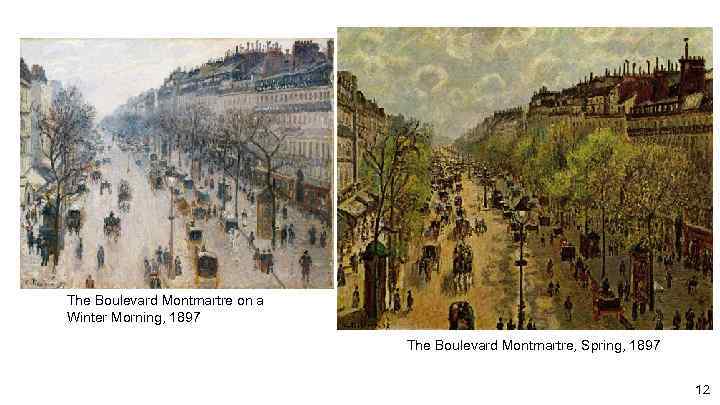
The Boulevard Montmartre on a Winter Morning, 1897 The Boulevard Montmartre, Spring, 1897 12
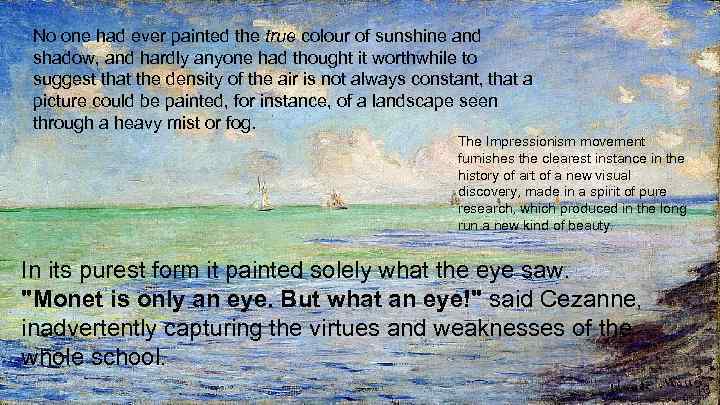
No one had ever painted the true colour of sunshine and shadow, and hardly anyone had thought it worthwhile to suggest that the density of the air is not always constant, that a picture could be painted, for instance, of a landscape seen through a heavy mist or fog. The Impressionism movement furnishes the clearest instance in the history of art of a new visual discovery, made in a spirit of pure research, which produced in the long run a new kind of beauty. In its purest form it painted solely what the eye saw. "Monet is only an eye. But what an eye!" said Cezanne, inadvertently capturing the virtues and weaknesses of the whole school. 13
Импрессионизм.pptx